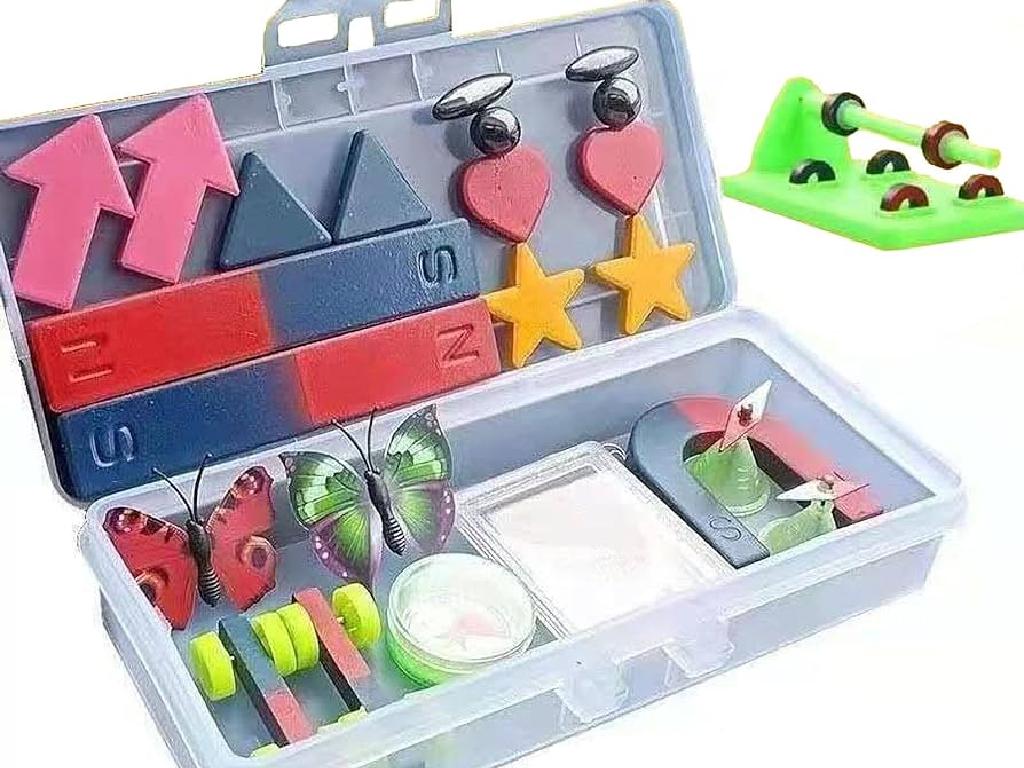Sequences: Word Problems
Subject: Math
Grade: Eighth grade
Topic: Sequences
Please LOG IN to download the presentation. Access is available to registered users only.
View More Content
Sequences: Solving Real-Life Word Problems
– Recognize patterns in sequences
– A sequence is an ordered list of numbers following a particular pattern.
– Relate sequences to daily life
– Examples: Stock market trends, sports statistics, or daily temperatures.
– Preview: Word Problems with Sequences
– We’ll tackle problems that involve finding terms in sequences.
– Strategies for solving sequence problems
– Use formulas and contextual clues to find missing terms.
|
Today’s lesson will focus on understanding the concept of sequences and how they apply to various real-life scenarios. Students will learn to identify and extend patterns in sequences. We will explore how sequences are not just abstract concepts but are present in everyday life, such as in financial trends or sports. The class will then move on to solving word problems that involve sequences, which will help students apply their knowledge to practical situations. Emphasize the importance of recognizing the pattern and using it to predict future terms in the sequence. Provide strategies for solving these problems, such as using the general term formula for an arithmetic sequence or looking for contextual clues in the problem statement.
Understanding Sequences in Math
– Define a mathematical sequence
– An ordered list of numbers following a specific pattern
– Explore simple sequence examples
– E.g., 2, 4, 6, 8 (adding 2) or 3, 6, 9, 12 (multiplying by 3)
– Discuss terms within sequences
– ‘Terms’ are the elements in the sequence, like 2 or 4 in the first example
– Application in solving problems
|
This slide introduces the concept of sequences, which are fundamental in understanding patterns in mathematics. A sequence is essentially an ordered list of numbers, each called a term, that follows a particular rule. It’s important for students to recognize both arithmetic sequences (where each term is obtained by adding a fixed number to the previous term) and geometric sequences (where each term is obtained by multiplying the previous term by a fixed number). Provide examples of simple sequences and explain how to identify the rule that governs them. Encourage students to think of sequences they encounter in daily life, such as days of the week or counting by fives. This understanding will be crucial as they move on to more complex word problems involving sequences.
Types of Sequences in Mathematics
– Arithmetic sequence patterns
– A sequence with a constant difference between terms, e.g., 2, 4, 6, 8
– Geometric sequence patterns
– A sequence where each term is multiplied by a constant, e.g., 3, 9, 27, 81
– Sequences in daily life
– Examples: Stairs’ steps, clock intervals, or weekly allowance growth
|
This slide introduces students to the concept of sequences in mathematics, focusing on arithmetic and geometric sequences. Arithmetic sequences have a constant difference between consecutive terms, which is known as the common difference. For example, adding 2 each time to get from one term to the next. Geometric sequences, on the other hand, involve a common ratio, where each term is multiplied by a fixed number to get the next term. Understanding these patterns is crucial for solving word problems involving sequences. Additionally, students should be encouraged to identify sequences in everyday life to understand the practical applications of this concept. For instance, the number of petals on flowers often follows a sequence, as does the arrangement of seeds in fruits. Recognizing these patterns in the world around them can make the abstract concept of sequences more concrete and relatable.
Solving Sequence Word Problems
– Break down word problems
– Read carefully, note key details
– Identify sequences in problems
– Look for patterns or series of numbers
– Determine the question’s goal
– Understand what you need to find
– Apply sequence knowledge
– Use formulas for arithmetic/geometric sequences
|
This slide aims to equip students with strategies to tackle word problems involving sequences. Start by reading the problem carefully and highlighting important information such as numbers, terms, and the context of the sequence. Next, identify whether the problem presents an arithmetic or geometric sequence by looking for a consistent pattern in the progression of numbers. Clarify what the question is asking: Is it the nth term, the sum of terms, or another aspect of the sequence? Finally, apply the appropriate formulas and knowledge about sequences to find the solution. Encourage students to practice with various word problems to become comfortable with these steps.
Solving Sequence Word Problems
– Identify sequence type
– Is it arithmetic, geometric, or neither?
– Determine the pattern/formula
– Look for a consistent change between terms
– Apply pattern for missing terms
– Use the pattern to calculate unknowns
|
When approaching sequence word problems, the first step is to identify whether the sequence is arithmetic (with a constant difference between terms), geometric (each term is multiplied by a constant), or neither. Once the type is determined, the next step is to find the pattern or formula that governs the sequence. This could be the common difference in an arithmetic sequence or the common ratio in a geometric sequence. After establishing the pattern, students should apply it to find any missing terms in the sequence. For example, if given the sequence 2, 4, 8, __, 32, students should recognize it as geometric with a common ratio of 2, and thus the missing term is 16. Encourage students to practice with different types of sequences and to write out each step clearly in their solutions.
Class Activity: Sequence Word Problems
– Read the problem as a class
– Determine the sequence type
– Is it arithmetic, geometric, or neither?
– Identify the pattern
– Look for common differences or ratios
– Solve the problem together
– Use the sequence formula to find terms
|
This slide is designed for a collaborative class activity focused on solving a sequence word problem. Start by reading the problem aloud to ensure all students understand the context. Next, guide the class to identify whether the sequence in the problem is arithmetic (with a constant difference between terms) or geometric (with a constant ratio). Discuss the pattern observed and how it helps determine the type of sequence. Then, work through the problem step by step as a class, applying the appropriate formula for the identified sequence type. Encourage students to participate in each step, and consider having different students contribute to different parts of the problem-solving process. This activity will help reinforce their understanding of sequences and their ability to apply mathematical concepts to word problems.
Class Activity: Solving Sequence Word Problems
– Read the problem individually
– Discuss solving strategies
– How to break down the problem and identify sequence patterns
– Solve the problem step-by-step
– Use the formula to find the nth term of the sequence
– Encourage class participation
– Ask questions to involve everyone in the process
|
This slide is designed for a class activity focused on solving sequence word problems. Start by having each student read the problem on their own to ensure individual understanding. Then, open a class discussion to explore different approaches to the problem, emphasizing the importance of identifying the pattern in the sequence. Proceed to solve the problem as a class, guiding the students through each step and encouraging them to participate by asking questions and suggesting next steps. This interactive approach helps students to engage with the material and learn from each other, fostering a collaborative learning environment. Make sure to walk through the problem-solving process slowly, ensuring that all students can follow along and grasp the concepts being applied.
Sequences: Practice Problems
– Solve sequence problems individually
– Compare answers with a partner
– Pair up and explain your reasoning
– Discuss solutions as a class
– Group discussion to clarify doubts
– Reflect on learning outcomes
|
This slide outlines the structure of the class activity focused on solving word problems related to sequences. Students will start by working on problems individually to assess their understanding. Afterward, they will pair up with a partner to compare their answers and discuss their approaches to solving the problems, which encourages peer learning. The class will then come together for a group discussion to review the answers, allowing for collective input and clarification of any misunderstandings. Finally, students will have the opportunity to reflect on what they’ve learned and how they can apply these problem-solving skills in future scenarios. As a teacher, prepare diverse problems of varying difficulty, and be ready to guide the discussion, highlighting common mistakes and best practices.
Class Activity: Craft a Sequence Word Problem
– Form small collaborative groups
– Create a sequence-based word problem
– Think of a scenario with a clear pattern of numbers
– Present your problem to the class
– Use clear and precise language for classmates to understand
– Engage with others’ sequence problems
– Listen and try solving problems from other groups
|
This activity is designed to foster collaboration and deepen students’ understanding of sequences through practical application. By creating their own word problems, students will have to think critically about how sequences work and how to describe them. Encourage each group to come up with a unique scenario that involves an arithmetic or geometric sequence. Provide guidance on structuring a clear problem statement and ensure they include all necessary information for problem-solving. As groups present, other students should actively listen and attempt to solve the problems, promoting a dynamic and interactive learning environment. Possible activity variations could include creating real-life scenarios, incorporating sequences in sports, cooking, or nature patterns.
Wrapping Up: Sequences & Looking Ahead
– Recap: What are sequences?
– Importance of sequences in math
– Sequences are everywhere: music, nature, and coding!
– Homework: Practice with word problems
– Solve problems to strengthen understanding
– Next class: Introduction to Series
– Series are sums of sequences, a new exciting topic!
|
As we conclude today’s lesson, remind students of the definition of sequences and their applications in various fields such as music, nature, and computer science. Emphasize the importance of understanding sequences as a foundational concept in mathematics. For homework, assign a set of word problems that require students to apply what they’ve learned about arithmetic and geometric sequences. Encourage them to approach these problems methodically and to look for patterns. In preparation for the next class, give a brief teaser about series, which are related to sequences but focus on the sum of terms. This will pique their interest and provide continuity to the learning process. Ensure that the homework is varied to cater to different skill levels and includes a mix of both arithmetic and geometric sequence problems.






